Dick's website has been resurrected,
Home -- article index
thanks to those who took on this task.
Cheers
Alan
Home -- article index
thanks to those who took on this task.
Cheers
Alan
I have been using HpW-Works software for a few months. I took my Twin-T Notch Filter based off of Dick Moore's circuit and analyzed its performance. HpW-Works is very powerful and has many features beyond most FFT software. One particular feature is the detector option. For my measurements below, I used the MIN option. I also used a large FFT size and a some different sampling rates to show the difference in bin count. I know I could have used a really high sampling rate, but it was not really needed. I also used a special stimulus file to obtain a 512K FFT measurement. The images speak for themselves.
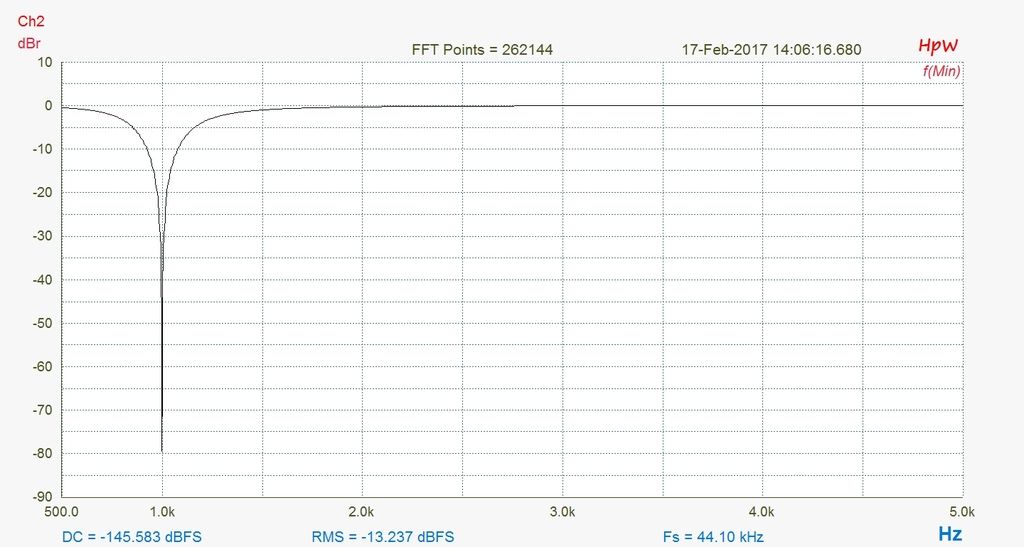
1KHz Notch using 256K FFT @ 44.1KHz sampling rate.
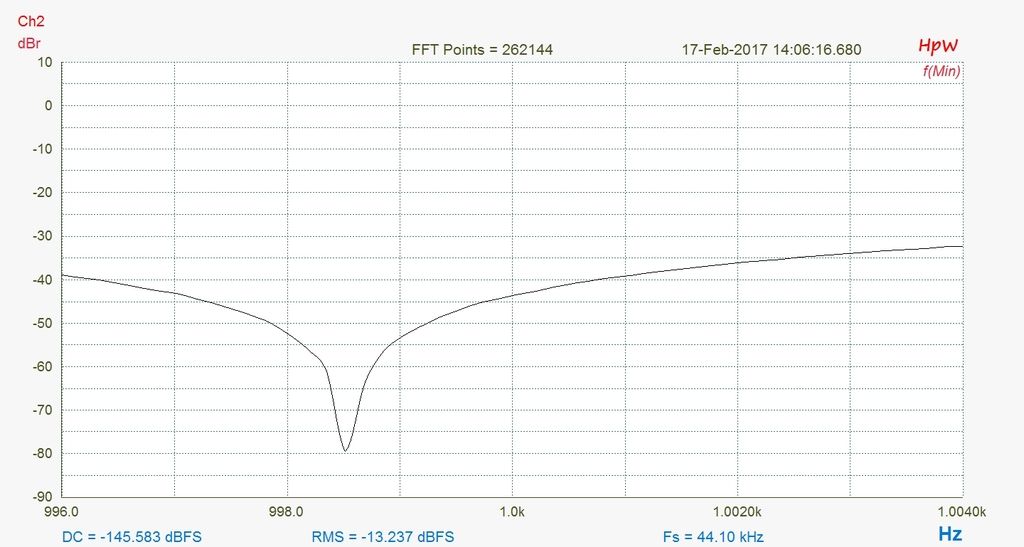
1KHz Notch using 256K FFT @ 44.1KHz sampling rate zoomed
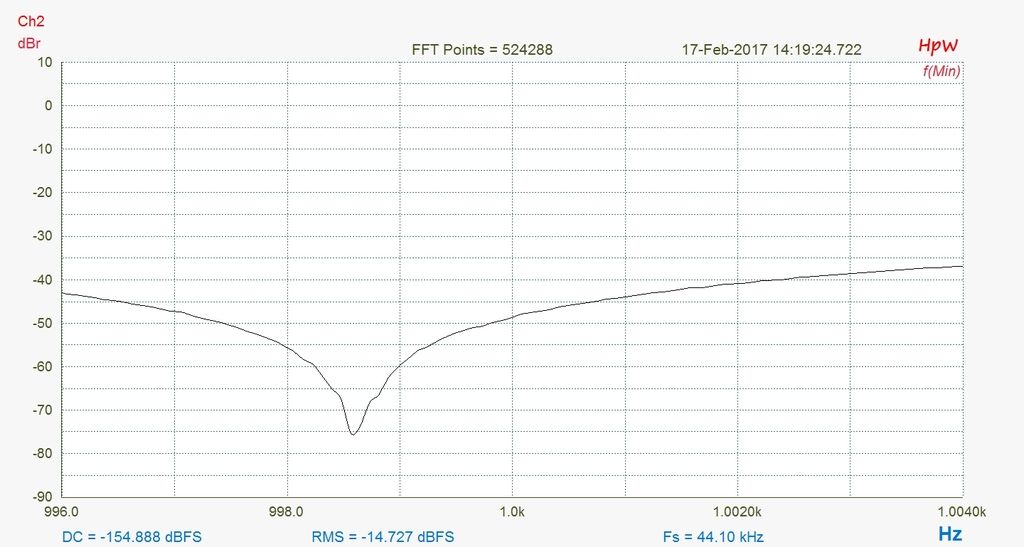
1KHz Notch using 512K FFT @ 44.1KHz sampling rate zoomed
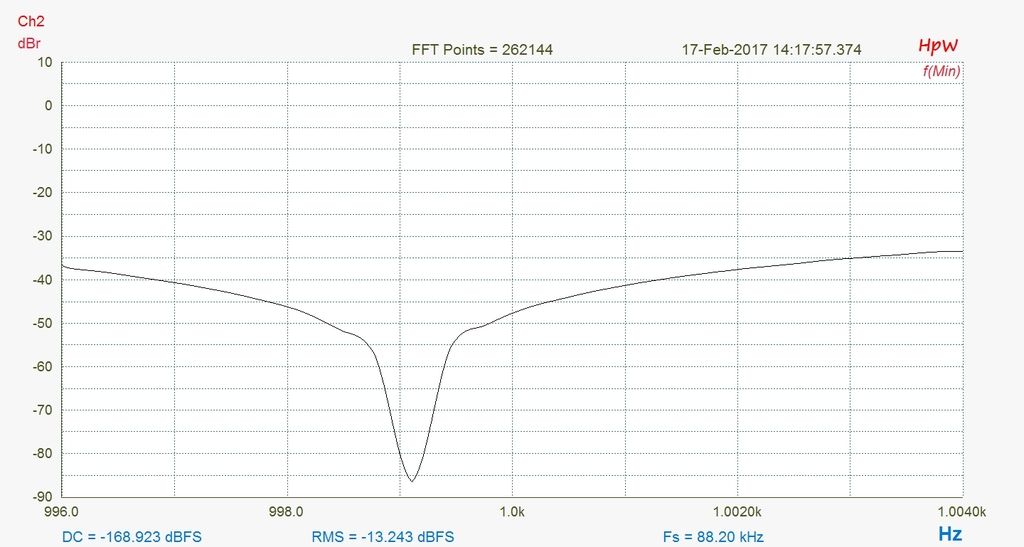
1KHz Notch using 256K FFT @ 88.2KHz sampling rate zoomed
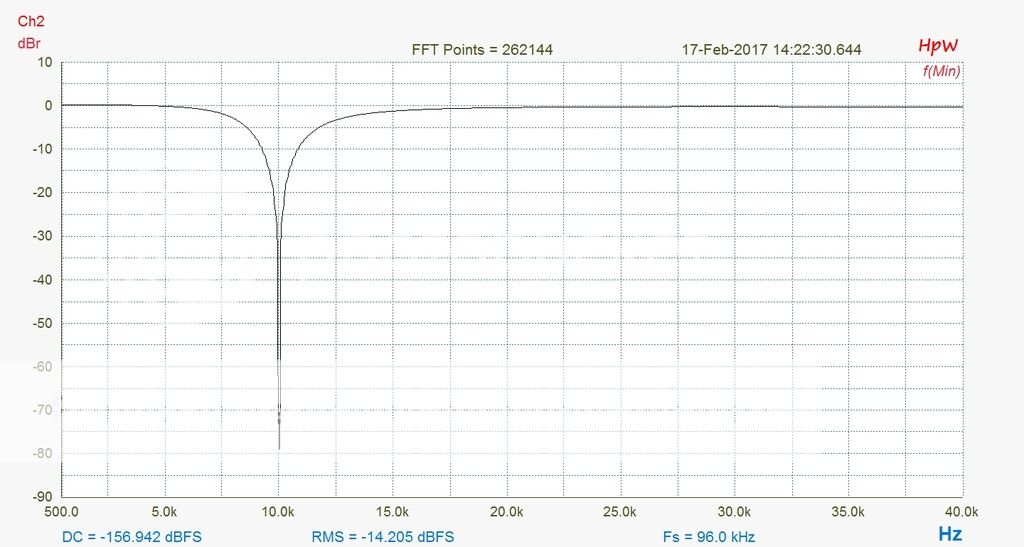
10KHz Notch using 256K FFT using 96KHz sampling rate

10KHz Notch using 256K FFT using 96KHz sampling rate zoomed
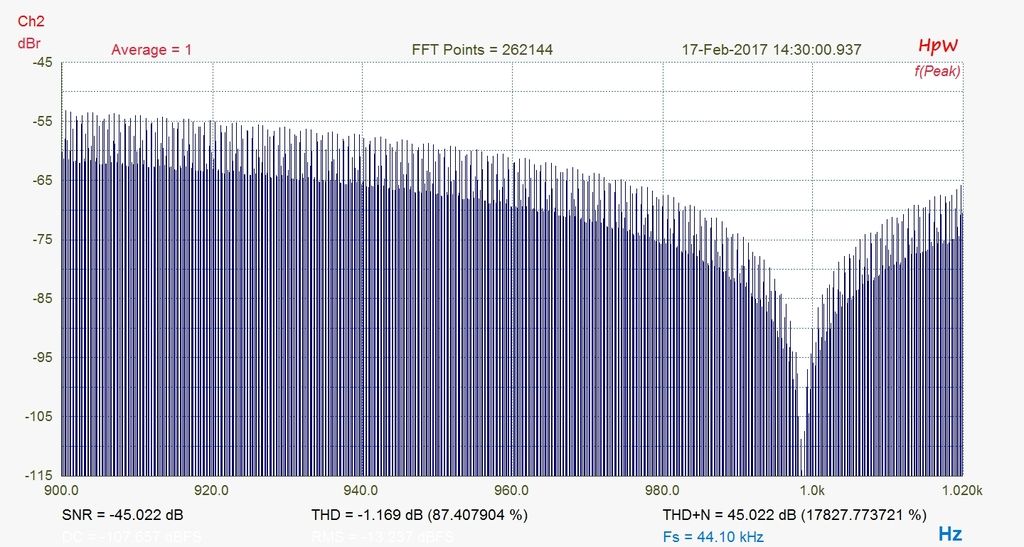
This image shows an option in the Hpw-Works software to show each bin as a bar in the FFT. This is the 1KHz notch @ 44.1KHz sampling rate. I did not zoom in as far as possible to show individual bins, but showed this as a general sample of what the mode looks like.

1KHz Notch using 256K FFT @ 44.1KHz sampling rate.

1KHz Notch using 256K FFT @ 44.1KHz sampling rate zoomed

1KHz Notch using 512K FFT @ 44.1KHz sampling rate zoomed

1KHz Notch using 256K FFT @ 88.2KHz sampling rate zoomed

10KHz Notch using 256K FFT using 96KHz sampling rate

10KHz Notch using 256K FFT using 96KHz sampling rate zoomed

This image shows an option in the Hpw-Works software to show each bin as a bar in the FFT. This is the 1KHz notch @ 44.1KHz sampling rate. I did not zoom in as far as possible to show individual bins, but showed this as a general sample of what the mode looks like.
Adding one more thing to my last post. My notch filter is powered by two 9 volt batteries. I was using one of the more popular brands 'ProCell' battery models and it leaked. It leaked so bad that it ruined the 9V snap connector assembly on the notch filter. I thought I had kept the notch filter powered on. Nope, it just leaked on its own.
For everyone using 9 volts to power stuff, keep an eye on their condition.
For everyone using 9 volts to power stuff, keep an eye on their condition.
Adding one more thing to my last post. My notch filter is powered by two 9 volt batteries. I was using one of the more popular brands 'ProCell' battery models and it leaked. It leaked so bad that it ruined the 9V snap connector assembly on the notch filter. I thought I had kept the notch filter powered on. Nope, it just leaked on its own.
For everyone using 9 volts to power stuff, keep an eye on their condition.
If I remember correctly the anode of the battery is the case. The anode is consumed through the life of the battery. If the manufacture goes cheap on the thickness of the casing then leakage of the electrolyte is the result. Corrosive stuff.
However this in not true for every type of battery. Alkaline batteries are the worst for this.
- Status
- Not open for further replies.